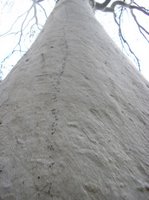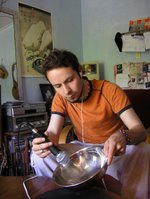On Monday afternoon after work I went to a launch party for a new book on the ledgendary Australian composer Percy Grainger. It was held in the Grainger Studio (also home of the Adelaide Symhpony Orchestra), and due to the events affilliation with the Elder Conservatorium there were an awful lot of horrible logos everywhere and a few people I regretted making eye contact with.
Grainger was certainly an eccentric character - aside from a fondness for masochism, leathergoods and crafting garments out of beachtowls, he invented a variety of his own instruments and made several (unsuccessful) attempts to overhaul the English langauge with his own brand of psuedo Dutch/English. In reality, this Grainger langauge sounds more like the way an academic writes after a few years of post-grad study whilst being stuck with a dissatisfying lecturing position. Like a snake eating its own tail (meow!).
His music is interesting, a kind of quasi-obsession with transcribing folk songs whilst absorbing Asian and American influences into his work. During the launch, one of his pianola works was played - a transcription of a neo-romantic-classical piece. The piece was transcribed for both the piano and orchestral parts, a veritable keyboard frenzy for up to twenty able digits and what must have been an early foray into over-dubbing circa 1920. I love the technology of the pianola (early MIDI), but I think I just hate classical music (up to 1897), as this piece just went on too bloody long with all of the usual cliches of exposition , development, recapitulation. I could have really done with a nice decapitation about five minutes in.
The one performance on the night that stuck out for me was a Grainger adaption of an old Chinese folk song which had been transcribed for string quartet by fellow Australian composer Peter Sculthorpe. The quartet (Grainger Quartet, but of course) played long beautiful sustained notes which overlapped each other with light harmonics arcing between the performers and around the space. The piece seemed to colour the room for me, with its shifting tints and hues. Much better.
By the way, later in the evening I found out from someone who shall remain anonymous that the Elder Conservatorium is half a million dollars in debt. Seems I got out at the right time, and I always knew those expensive plants in the garden area were a big mistake.















